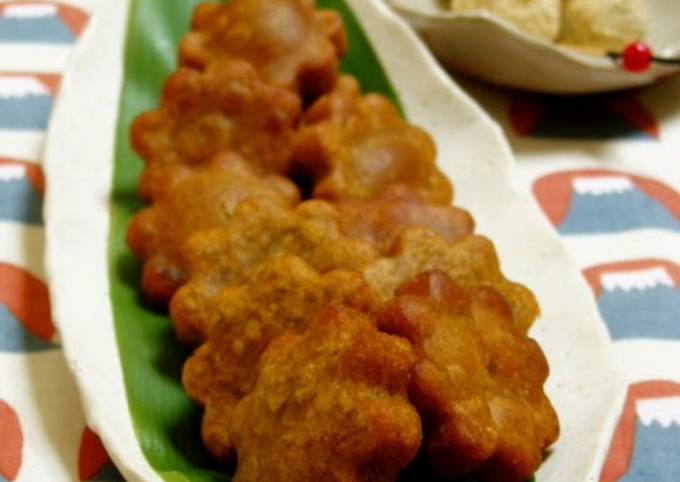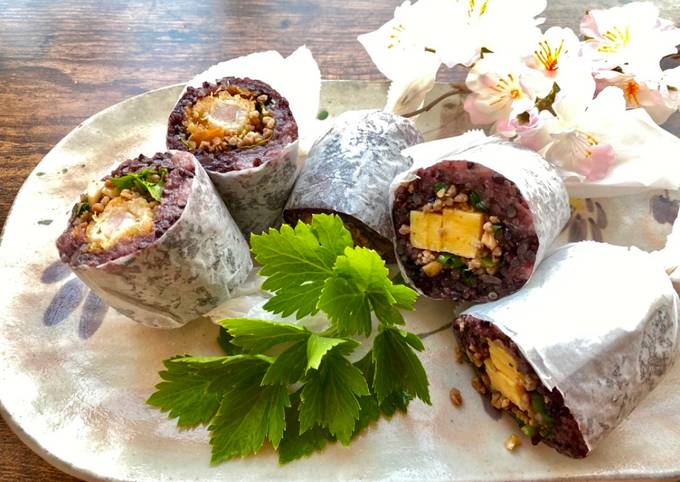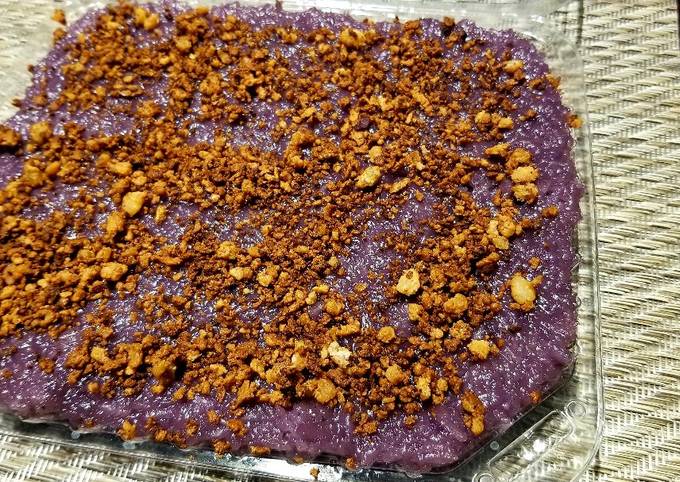
Hey everyone, it is Jim, welcome to my recipe page. Today, I’m gonna show you how to make a distinctive dish, sabu mochi. It is one of my favorites. This time, I am going to make it a little bit unique. This is gonna smell and look delicious.
I tried re-creating and adapting a recipe my mother said she copied by watching my great-grandmother (my mother's grandmother on her father's side), who's from one of the Okinawa islands. The version my mother made is the 'deep fried' one using Joshinko flour. The latest tweets from @Mochi__sabu Shibireko is beautiful Yamanashi nature at it's finest. Pour remaining broth into a saucepan and bring to a boil.
Sabu Mochi is one of the most favored of current trending meals in the world. It is appreciated by millions daily. It is easy, it is fast, it tastes delicious. They are nice and they look wonderful. Sabu Mochi is something that I’ve loved my whole life.
To get started with this particular recipe, we must prepare a few ingredients. You can cook sabu mochi using 7 ingredients and 17 steps. Here is how you can achieve it.
The ingredients needed to make Sabu Mochi:
- Prepare The batter:
- Take 160 grams peeled Sweet potato
- Prepare 60 grams Joshinko or mochiko
- Make ready 60 to 70 grams Brown sugar
- Take Other ingredients, depending on the cooking method:
- Make ready 1 Oil for deep frying
- Make ready 1 Kinako
It is called glutinous (Latin: glūtinōsus) in the sense of being glue-like or sticky. Canción de uno de los máximos cantantes latinoamericanos Q. D. con excelente calidad de audio. Specialties: King Shabu Shabu is a Japanese hot pot restaurant where every diner is provided with fresh and high-quality ingredients to cook in their individual pots.
Instructions to make Sabu Mochi:
- Peel the sweet potato, and slice 1 cm thick. Put into a bowl of water. Heat up some water in a steamer.
- Key point 1: The potato was 180 g before peeling, and 160 g afterwards. This might serve as a good estimate for how much weight a medium-sized sweet potato will lose after peeling.
- Steam the sweet potato, and pass it through a sieve while still hot. Add the Joshinko rice flour and brown sugar and knead together well with your hands. It will be floury to begin with, but will gradually come together.
- Aim for a dough that is about the hardness of your earlobe. If you press it with your fingers it should leave a mark. The dough is done.
- Key point 2: You can wrap the kneaded dough in plastic wrap, put that in a freezer bag and freeze. However, do not defrost the dough in the microwave; let it defrost naturally. From this point on, just choose your preferred cooking method.
- Deep-fried Sabu-mochi (basic method): This is the original method. Press the dough out to about 1cm thickness as you would with cookies, and cut out into any shape you like, deep fry until crispy in 160 to 170°C oil.
- Key point 3: When you deep fry these they will puff up a bit (especially if you use mochi flour. Joshinko flour doesn't puff up so much). When the outside becomes golden brown they are done. It's best to turn them over often.
- Steamed sabu-mochi: Tear the dough into pieces about the size of a pingpong ball, and steam over high heat for about 15 minutes. Take out using a damp clean cloth, and knead for a bit, then roll up into a ball again and they're done. Serve coated with kinako (roasted soy flour), or with brown sugar syrup.
- Pan-fried sabu-mochi: Take 15 g portions of the dough, roll into balls and press to about a thickness of 1 cm. Pan-fry in a non-stick frying pan on both sides. These are delicious with walnuts kneaded in. If you cut them out into squares, they will look like kintsuba (square-baked sweetened bean paste).
- This is how pan-fried sabu-mochi look like on the inside. It still has that mochi-like texture. This method is more suited to the version made with mochi flour.
- Boiled sabu-mochi: Cook balls of the dough in boiling water for about 7 minutes. Put the cooked balls into cold water. This 'mochi' won't float to the surface like shiratama. If you leave them in water for too long they'll get water logged, so take them out within a short time.
- I recommend serving the boiled version in coconut milk with sugar added, plus some cooked sweet adzuki beans, zenzai-style. They also go well in milk with mashed bananas.
- Key point 4: If you find it hard to get a hold of mochi flour, use shiratama flour that has been broken or ground up. (This is the same with, "Mochi-ko muffins". )
- Key point 5: My mother told me that she used to make these with Joshinko so I followed her instructions, but with the exception of the deep fried and steamed methods, mochiko (or crushed shiratamako, which uses the same base ingredients) doesn't turn as hard even when cooled.
- Key point 6: This shows how the deep fried version looks when cooled down to room temperature (in the winter) and cut. It's still tender, but it tastes better if warmed up in the microwave. If they turn hard, please do the same.
- This is the brown sugar I used. It's hard to see the writing, but comes from the island in Okinawa where my great-grandmother is from. I see it occasionally on sale in department store food halls (in Japan).
- This is a precious box of "Mochiko" that a friend who lives overseas got for me! I tried this out too and the results were great. And it was easy to knead too. If you can get this, please try it.
D. con excelente calidad de audio. Specialties: King Shabu Shabu is a Japanese hot pot restaurant where every diner is provided with fresh and high-quality ingredients to cook in their individual pots. We also have a full bar where you can find amazing cocktails, craft beer, Japanese whisky, sake and so much more. Shabu Shabu is a popular Japanese-style hot pot where the meat and assorted vegetables are cooked in a flavorful broth called kombu dashi. Everyone at the table takes part in the cooking and enjoys the ingredients with different dipping sauces.
So that is going to wrap this up for this special food sabu mochi recipe. Thanks so much for reading. I am sure that you can make this at home. There’s gonna be more interesting food in home recipes coming up. Don’t forget to bookmark this page in your browser, and share it to your loved ones, colleague and friends. Thank you for reading. Go on get cooking!

